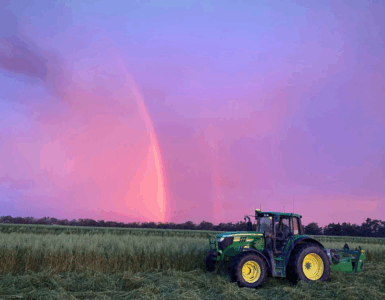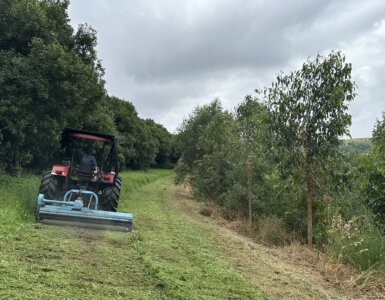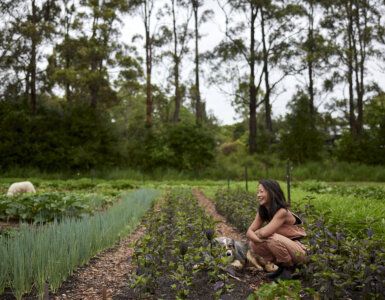The humble cabbage may not often receive the kudos it deserves. But for one couple who swapped the hustle and bustle of Sydney for the pristine pastures of Tasmania – cabbages are king. Tom and Sue Glynn might be new to farming but the art of turning cabbage into kimchi is something that’s been passed down for generations. Now, they’re giving customers the chance to do it too, with workshops. The woman behind KimchiME has a lot of passion for this fermented superfood and wants everyone to experience the health benefits.
The farming adventure
Their farming adventure all started with Tom and Sue simply deciding it was time for a change. They narrowed that change down to New Zealand or Tasmania.
“Tom decided to flip a coin. I bet on Tasmania. He bet on New Zealand.”
They ended up in Stanley, Tasmania, and describe the move as ‘falling in love’.
“We’ve done the bravest thing you can do on the planet. To go from the middle of Sydney to north-west Tasmania! It is seriously rural,” Tom chuckles.
Organic farming
Tom grew up on a beef cattle property, before moving to the city. And Sue had no prior knowledge of commercial farming. Their friendly Tassie neighbours offered Sue a paddock to experiment. It went well and the couple currently has two hectares of certified organic cabbages. Tom prepares the paddock for planting, while Sue’s specialty is homemade fertiliser.
“Organic farming is just labour. We started doing it all by hand but have mechanised bit by bit. The Korean JADAM low-cost fertiliser is really interesting,” Tom explains.
Waste products from the cabbages such as leaves and off-cuts are put into a drum with a few ‘secret herbs and spices’. That’s then left to ferment and is eventually sprayed onto the crop using guns on the back of the tractor.
“What that does is promote microbial growth in the soil. It really works!” exclaims Tom.
The operation yields about 3000 cabbages per year.

The pair also have an environmentally friendly solution to the dreaded cabbage moth, which can take out a crop in just a few days.
“It’s soap and water with garlic. It stops the breeding,” explains Sue.
Unfortunately, it dissolves after a few days.
“You can use wham, bam, thank you, ma’am pesticides and you’ll be good for a few months but organic farming, you just have to do it again and again and again,” Tom laments.
The making of the kimchi
So, while the growing of the cabbages is a challenge, the making of the kimchi comes easy. Kimchi is a staple in Korean cuisine.
“It tastes sour, tangy, crunchy, juicy. Interestingly, the sour taste doesn’t come from preserving vinegar. It’s natural microbiology in the process of fermentation,” Sue explains.
Her parents were born in North Korea and escaped before the war. There, the climate is colder, so their recipe differs a little from the traditional process.
“The recipe, my grandmother and mother passed on to me”
She adds daikon, kale, wokbok and beetroot as alternatives too. People comment on Sue’s recipe regularly and she’s happy to share it by offering workshops online and in-person.
“That’s what I’m trying to do rather than manufacturing. Manufacturing doesn’t really interest me! I’m interested in teaching and supporting people’s health. That’s my passion.”
Reducing food waste
Kimchi is a warming food in the body and helps to preserve surplus food to last during the cooler months. She encourages us all to source good Australian produce and give fermentation a go!
Keep an eye on her KimchiMe Instagram and Facebook accounts for the next round of workshops.
Hear more stories like this by subscribing to the Telling Our Story podcast on iTunes (or wherever you listen to podcasts) and follow podcast host Angie Asimus on Instagram for more updates.







































Add comment